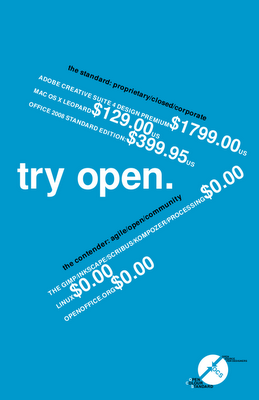How to (theoretically) roll your own colour matching system
The basic facts: Colour matching systems exist to standardize colour across the different parts of pre-press workflow. The dominant player, Pantone, uses ten different inks to create its spot colours. In addition to spot colour, Pantone employs its own augmented version of CMYK: Hexachrome, or CMYKOG. Hexachrome is supposed to be able to replicate more of the Pantone spot colour gamut than traditional CMYK can.
To roll your own spot colour standard, you'll need:
- a light spectrometer (build, buy or borrow)
- samples of ink from various manufacturers
- samples of basic, elemental pigment
- a precise scale
- time
- various types of paper
Next, grab your spectrometer. Use it to measure the different inks, comparing readings across brands. If two inks have the same readings on one type of paper, go on to the next type of paper and make sure they still match. If you get an exact match on all types of paper, score! Now see if any of the other inks match the spectrum. From each colour group, you should get data about which brands match each other exactly. Be sure to note the details. In an ideal world, it should be possible to find a grouping of different ink manufacturers who make matching products (although who knows what the success rate will be in reality). If they match across the spectrum of common colours, you've got yourself a palette.
You can use this palette as a jumping off point for your own colour mixing experiments. You'll eventually want to narrow down the number of different inks. Pantone, as mentioned above, uses ten. With a base selection of inks, consistent across several manufacturers, you can create your own custom palette of spot colours.
Labels: colour theory, commercial colour, ocs

